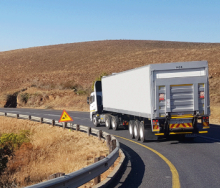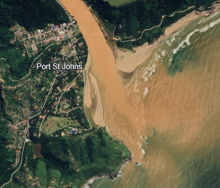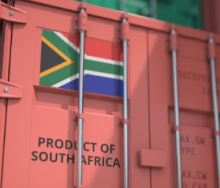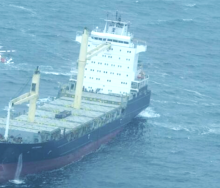Following December’s festive season close-down for the construction sector, the South African National Roads Agency Limited (Sanral) says work has re-commenced on the Mtentu and Msikaba bridges in Pondoland.
The two bridges are part of the N2 Wild Coast Road Project that will speed up highway access through the Eastern Cape.
From the Port of East London, the N2 loops inland to Butterworth, Idutywa, Umtata, Mount Frere, Mount Ayliff and Kokstad, before dipping down to the coast in KwaZulu-Natal, slowing road freight towards the Port of Durban and vice versa.
The new coastal highway will significantly improve logistics and open up a part of rural Transkei that has been left undeveloped.
Construction of the two bridges creates around 21 000 to 28 000 indirect jobs during construction and will require 8000 full-time personnel when completed, Sanral has said.
The Mtentu River bridge near Mbizana will be the highest in Africa.
It will also be one of the longest cantilever bridges in the world, with a main span of 260 metres and a maximum height of 223 metres.
This bridge has been beset with problems from the start.
Aveng Strabag joint venture (JV) walked out on the project in early 2019 following violent community protests against its construction.
The R4.06 billion contract then went to China Communications Construction Company and Mota-Engil Construction South Africa in another JV in November 2022, with construction commencing in August 2023.
The expected completion date is the end of 2027.
The cable-stayed bridge over the Msikaba River near Lusikisiki is worth R1.75bn and R553 million has been spent on suppliers, service providers and subcontractors.
This bridge will have a 580-metre deck span and will cross over the 198 metre deep Msikaba River gorge.
Concor-Mota Engil JV is the main contractor.
It will be Africa’s longest cable-stayed main-span bridge.
Msikaba’s project director, Laurence Savage, says the bridge is possibly the most complex structure of its type ever undertaken in South Africa.
The Mtentu and Msikaba bridges will respectively take 69- and 85 kilometres off the current N2 and R61 routes, and reduce average truck travel time by about three hours.
Reduced fuel costs and wear and tear savings are also a given.
Sanral’s southern region manager, Mbulelo Peterson, said: “Limited environmental disturbance, aesthetics and climate resilience were among the prime factors taken into account when the bridges were designed during the concept stage.”
Both bridges were designed by Denmark-based Dissing+Weitling.













